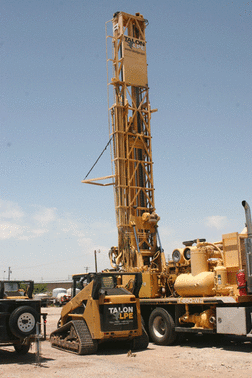Located in West Texas, the Lipan Aquifer provides water to eight counties. It is primarily used to provide water for agriculture, though it also supplies water to cities, factories, and homes. The aquifer is composed of gravel, clay, shale, and sandy limestone, and water in the different layers or rock is hydraulically connected. The water is slightly salty, containing between three hundred and three thousand milligrams of salt per liter. The water is very hard, meaning it contains large amounts of magnesium, calcium, and other minerals.
Due to both droughts and poor water management practices, the Lipan Aquifer has historically had trouble supplying a consistent amount of water to its dependents. During the late 1990s, water levels fell so low that much of the aquifer could not be used for large periods of the irrigation season, and what could be used was pumped at a reduced rate.
The Lipan-Kickapoo Water Conservation District seeks to prevent water shortages of this kind. It regulates the amount of water its residents use, and seeks to protect water supplies from pollution. The district has not always been successful in these endeavors. In 2011, for example, a Texas-wide drought brought water levels in the district to their lowest point since the 1950s.
Drilling Techniques
The primary method used to obtain water from the Lipan Aquifer is air rotary drilling. This method involves using a crushing action to produce deep boreholes in rock. This usually involves the use of an impact hammer to provide downward, rotational force on the rock, though more delicate operations require a rotational cutting drill bit. Once the holes are drilled, drillers can estimate the production capacity of the part of the aquifer into which they're drilling. They then place pipes in the drill holes to provide regular access to the aquifer. This process has been performed at 1,300 wells in the Lipan Aquifer.
Air rotary drilling is one of the most common drilling methods. It can be performed on all types of rock, and can be used to collect not only water, but also geothermal steam, natural gas, and crude oil.
Interested in drilling for oil in the Lipan area? Talon/LPE Drilling Services offers safe, affordable, environmentally-friendly drilling. Our techniques include air rotary drilling, mud rotary drilling, hollow stem auger drilling, and soil boring. For more information and to get a free quote, visit our website today.

